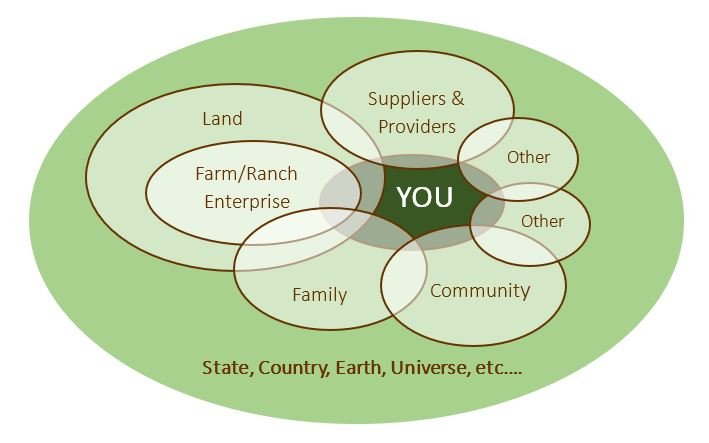Should Regenerative Agriculture Also Be Holistic?
Hopefully if you found/read this blog, you have been made aware of regenerative agriculture.
And hopefully, you’ve also heard of either the 5 or 6 principles of agriculture:
Least Disturbance: Keep soil structure intact and biology thriving with no/low ploughing no/reduced chemicals less passes with tractors and machinery ...
Living Root: Maximize photosynthesis and pump liquid carbon into the ground ...
Soil Armor: Mother nature doesn’t like to be naked ...
Animal Integration: Ecosystems evolved WITH animals ...
Increased Biodiversity: Nature hates monocultures ...
Context: No two farms are alike ...
The sixth principle, CONTEXT, which many seem to put at the bottom of the list or completely ignore, is where I want to focus on.
The beauty of regenerative agriculture’s principles is that it advocates working with nature. Nature is complex and these principles give you a guide to sift your management and decisions through.
What I see as I work with fellow farmers and ranchers is that context isn’t being considered enough.
No two farms are alike. No two humans are alike! No two situations are alike!
Context includes (not a comprehensive list):
Your values
Your environment (where you are on the brittleness scale)
The management history of your land
Your bank account
Where you are on your farming/ranching journey (in terms of experience and knowledge)
Your knowledge on the four fundamental ecosystem functions
Your family life
Your desired financial, social and environmental outcomes/goals
Awareness and understanding the management tools you have available
If you’re stewarding land, you know that there are no parts in nature. There are only wholes. Wholes that influence and are influenced by other wholes. There are immeasurable relationships in nature that we must pay attention to and manage. This is holism.
As such, regenerative farmers and ranchers should also be holistic managers and pay attention to all the relationships that they are responsible for.
Your management decisions/actions should consider the above listed context (and any other not listed) into the complexity of making a decision that honors the other five principles of regenerative agriculture!
Regenerative agriculture management should never be prescriptive (ie you're told what to do)!
Nature is complex so we need to embrace the complexity and think holistically (ie consider the root cause of what you're seeing on the land, your values, your financial situation, your environment, your quality of life/family relationships, your desired outcomes, etc....)
Regenerative agriculture and holistic management should go hand in hand in managing the complexity we find in nature!
If you want more discussion on this, join my Facebook Group, Best Practices for Farmers & Ranch Owners
